Your main objective as the owner of an Ecommerce store should be to attract targeted website traffic to your business to turn visitors into paying clients. There are two ways to go about doing so: organic and paid marketing.
On the organic side, Ecommerce blogs are a great way to get leads and visitors to your website, build their trust in your service/products, and convert them into paying customers.
Infact, as per a SEMrush survey, 86% of content marketers use blog posts as a component of their content marketing strategy. This demonstrates that ecommerce blogs, with their long-term ROI, greatly influence your ecommerce business.
Throughout this article, we cover why ecommerce businesses need a blog, ecommerce blog ideas, and some of the best ecommerce blogs and what you can learn from them.
Benefits of Ecommerce blogs: Which you cannot ignore
1) Increases awareness of your brand
For today’s internet-first businesses, Ecommerce blogging can help you stand apart. According to a recent estimate, more than 600 million active blog sites are online. A sizable fraction of these are the best ecommerce blogs, even though many are personal blogs.
Despite this alarming statistic, blogging may set your internet business apart from your rivals, especially with a well-planned content marketing strategy. What is critical is your ecommerce blog ideas should help the audience make better decisions. Educational and engaging content builds trust in your brand. When it is optimized with the right keywords, your content starts ranking on search results.
2) Boosts website traffic
According to HubSpot, websites with the best ecommerce blogs receive 434% more indexed pages than those without blogs. Also, your chances of appearing in the search engine results increase the more pages Google indexes on your website.
SEO optimized blogs convert readers and visitors into customers. To come up with content that attracts the right visitors to your Ecommerce website, start by understanding the buyer persona and what their pain points are. Next, conduct SEO research to know what the audience is looking for on search engines so that you can create and provide them with the best content.
3) Encourages communication and data gathering
Owing to the traffic you receive on your Ecommerce blogs, there is abundant data generated in the form of website analytics. This can be in the form of the number of visits to the ecommerce blogs, the amount of time spent on a page, the bounce rate, and so on.
Additional insights such as comments left by readers on ecommerce blog entries reflect their wants and preferences. They may also provide suggestions about how to make your items better.
Blogging may help promote a feeling of community by allowing leads the chance to interact with you directly and share their opinions. In continuation, if you have a Shopify ecommerce blog, you could create a variety of content that your customers can refer to. Blogs, how-to guides, interactive quizzes, and ebooks are some ways to increase engagement and gain more insights into your content strategy.
What’s important to remember is that you need to consider both qualitative and quantitative insights to make an informed decision about Ecommerce blog ideas.
Critical factors to keep in mind while integrating your Ecommerce blog with your online store
1) Easier to find on the homepage
First and foremost, your ecommerce blog section should be easy to find on your website homepage. It is because many people like to read blogs while making a purchasing decision. Yet, when they cannot access it from the homepage, they read other Google reviews. These reviews may get excellent or unfavorable feedback. For this reason, a blog area should be integrated into the site clearly and visibly.
For example, raw natural pet food brand Stella & Chewy’s Ecommerce website has a blog visible right on its homepage.
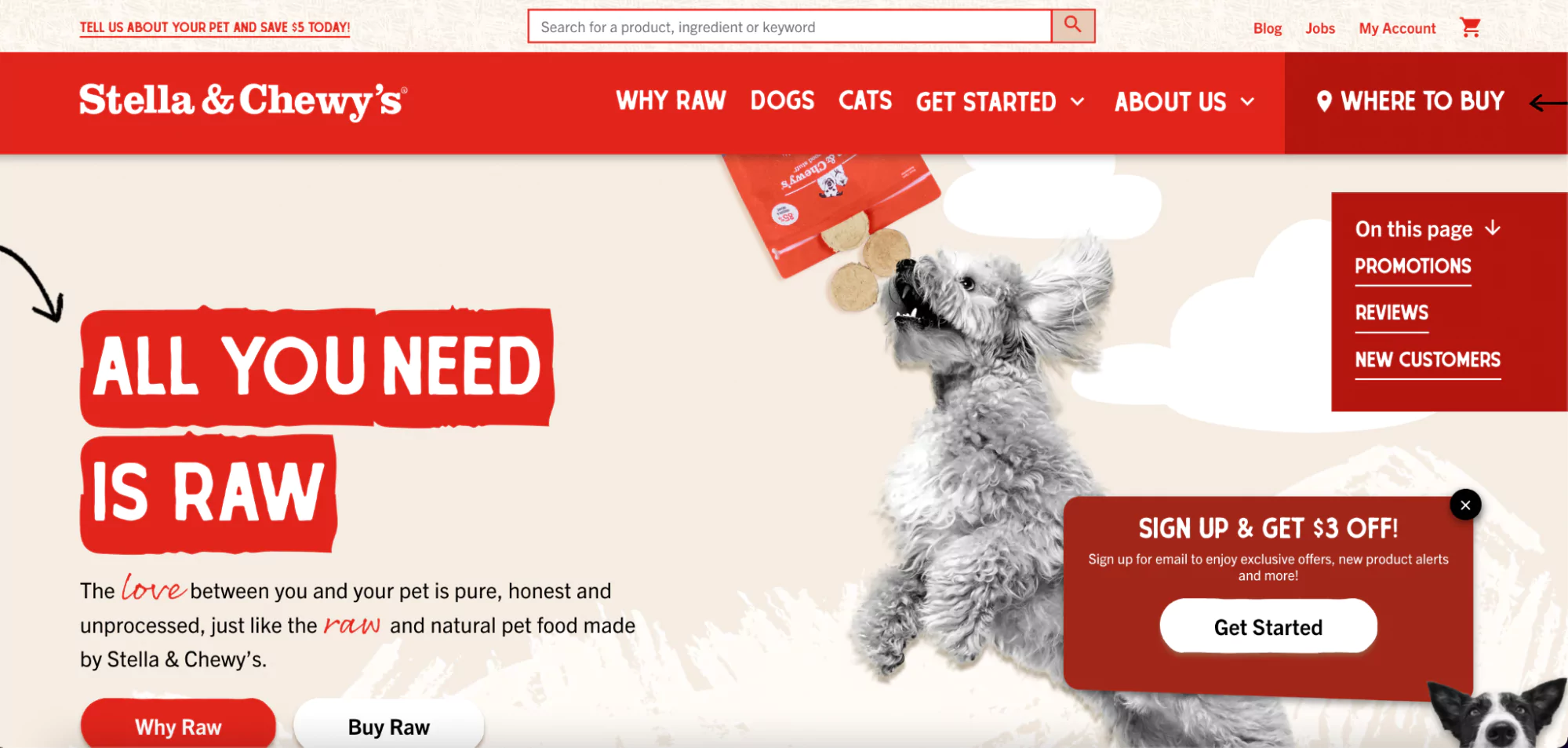
2) It should have helpful content
You should include ecommerce blog posts addressing the problems and the solutions. It should be specifically pertinent to your target market and products. This is an immediate bonus because it indicates that readers who click through and continue reading are already somewhat qualified to purchase.
Let’s take our favorite ecommerce blog example of DTC skincare brand Peach & Lily. What’s most striking about their blog strategy is that each post is educational in nature. For example, the post on Retinol vs Retinoid covers the difference between the two types of vitamin A and the product is one of the retinoid solutions that improve your skin.
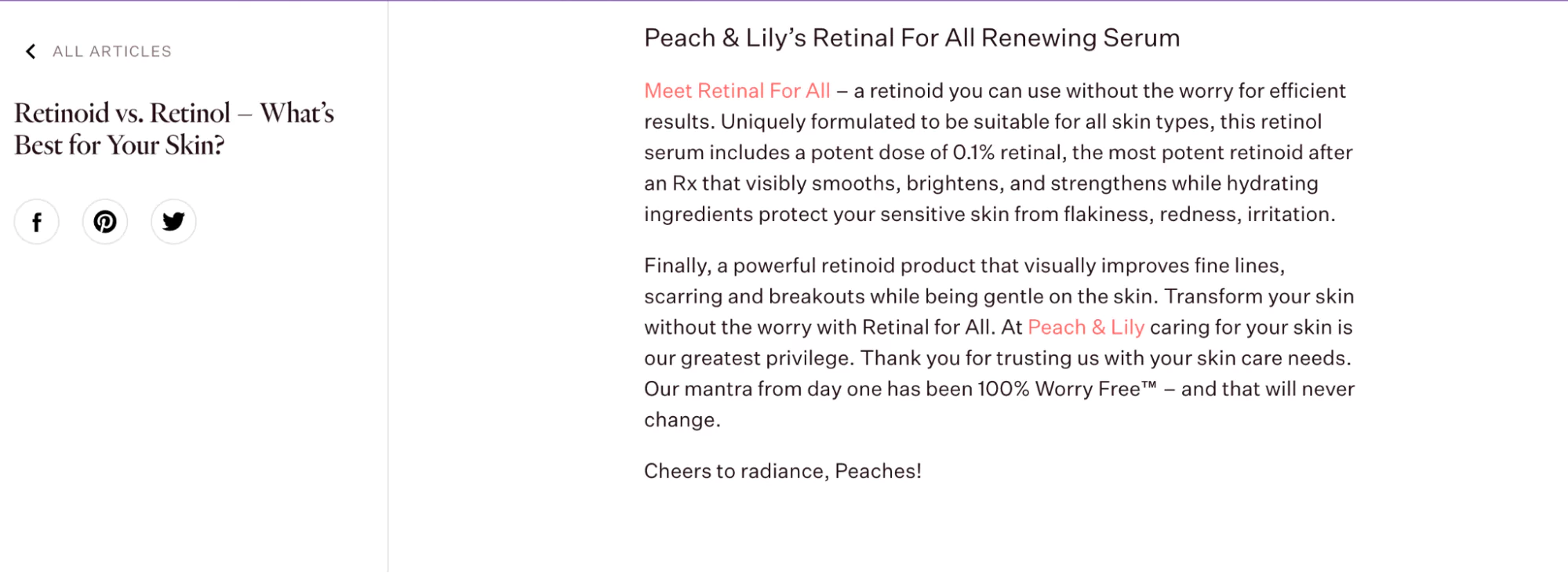
Another unmissable point here is the CTA of 15% off on the first purchase: placed on the blog homepage in the form of a pop-up. Indeed, an important point of top ecommerce blogs like Peach & Lily is that they incentivize users even on the blog page to make a purchase.

3) Limit text fonts
Using more than three different font styles will undoubtedly make visitors feel dizzy. That will result in a disorganized appearance and perplexed readers. Also, these fonts and colors should go with the brand’s color.
The best ecommerce blogs prefer using just two fonts:
- One for the content and
- Another id for all headings and labels, including those on widgets.
Your logo can use a different typeface if you’d like.
4) Maximize white space
As an Ecommerce blog owner, you should make the most of the white space to draw readers’ attention to the text. Don’t clutter your blog’s sides, top, and bottom with useless information and distracting photos, especially in the middle. For blog design inspiration, check out how Comrad Socks uses ample white spacing for clutter-free layout.
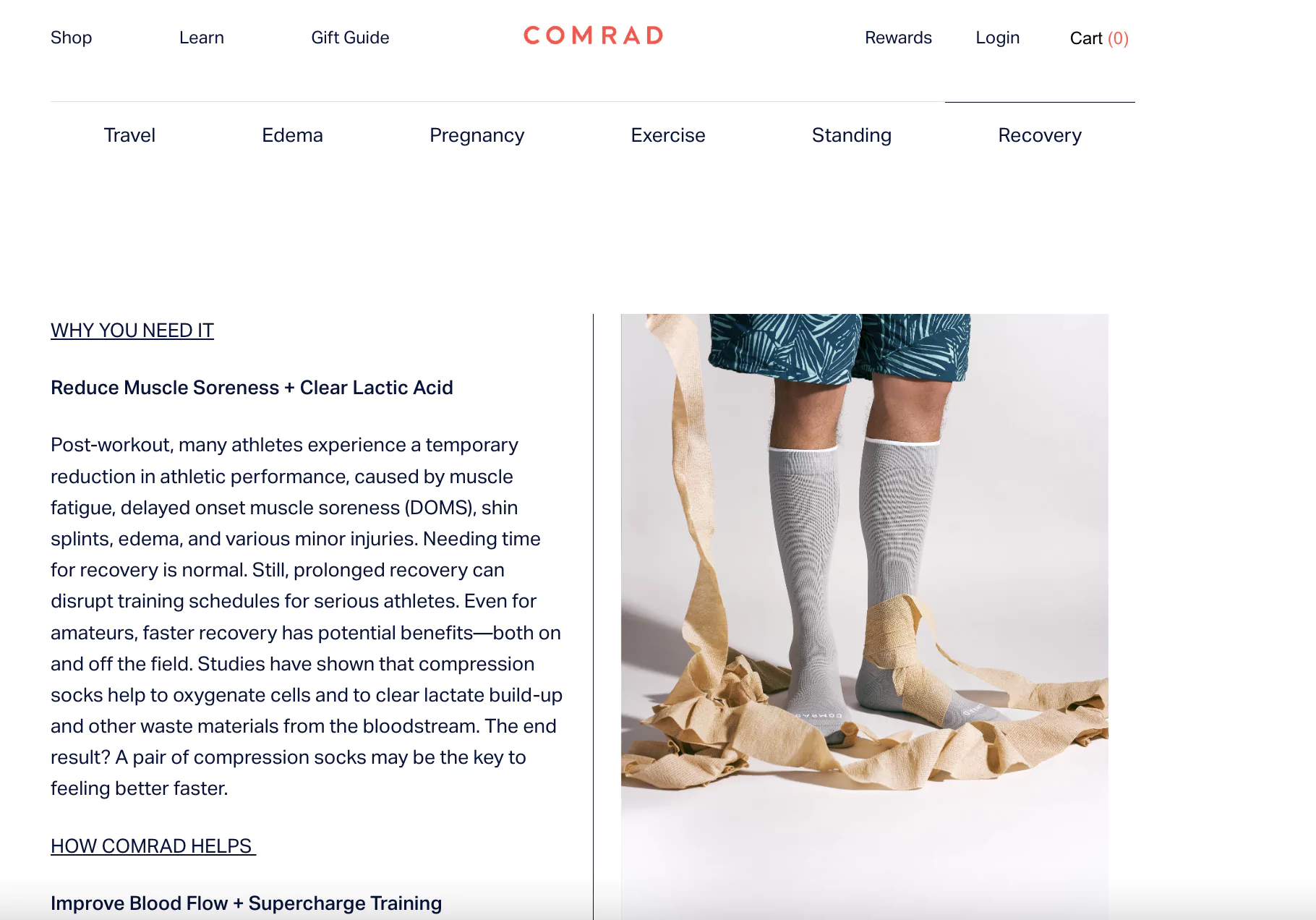
Remember that separating various sections on a page with white space is crucial. So, you may leave extra white space between the widgets column and the main area rather than employing a fancy line.
5) Use appealing images
According to several studies, a majority of customers say that product photos play an important role in selecting and purchasing Ecommerce products.
Stick to your own aesthetic and produce original material rather than depending on stock photography to achieve the highest quality photographs. High-quality photos can be one of the best ecommerce blog ideas to help potential and existing customers visualize owning your products because they cannot touch them physically.
Best practices for creating and promoting your Ecommerce blog
1) Provide a link to your blog in the website’s primary menu
Most websites feature a menu at the top of the page, which enables users to access various parts of the site easily. For instance, the Weebly website has a dropdown menu with subsections like Weebly Blog and SEO guides on the main menu.

Similarly, add a link to your ecommerce blog in the main menu. This facilitates search and makes it simple for visitors to find the area of the website that most interests them. An integral part of your Ecommerce SEO backlink strategy, these links are used by search engines much like they are by site users to find the information on your website.
2) Post your articles on social media platforms
With millions of users, social media platforms for your Ecommerce blog promotion strategy cannot be overlooked. The case in point example would be: the marketplace Etsy.
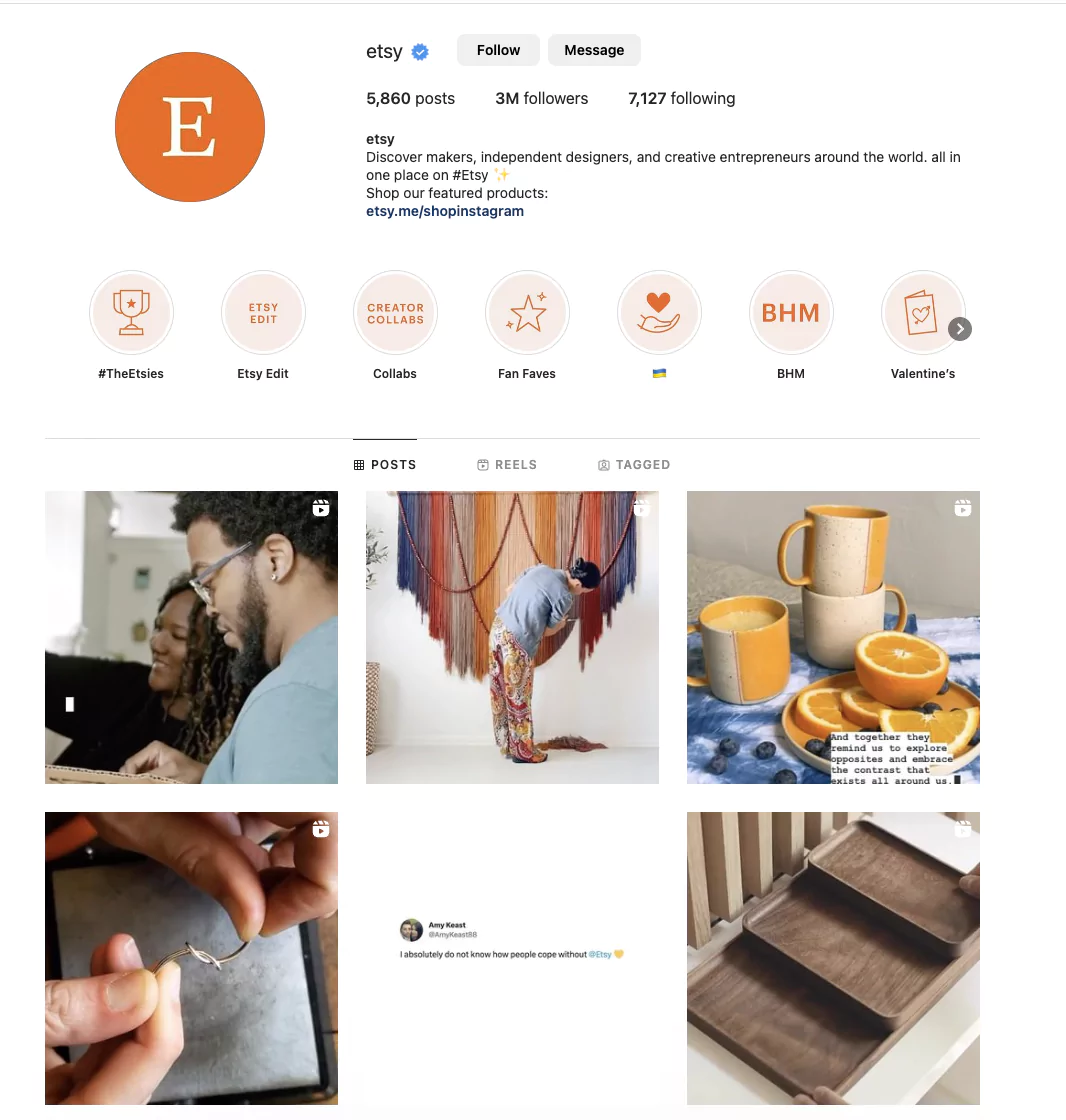
As a brand with a goal to “create a more meaningful and enduring world,” Etsy sees itself as more than just a marketplace. Etsy has adopted Facebook, Pinterest, Instagram, and Twitter as its preferred social media channels for sharing and interacting. Each story comprises a picture or video with the ecommerce blog post link, as well as a call to action that is appropriate for the target demographic.
3) Think of appropriate forums and Q&A websites
There can be forums or Q&A websites where your target audience is active, depending on the sector you work in. If so, you can broadcast on these websites and converse simultaneously. Such as Reddit, Quora, Yahoo, LinkedIn, and more.
Spend time having discussions and asking and responding to inquiries. If they are pertinent to the site, you can contribute your blog entries, but interaction should be the primary goal of your activity. Establishing these relationships and being known in the community may drive traffic to your blog.
4) Make it easy for people to share your blogs
Using social share buttons while creating the article, you can make it simple for readers to share your blog content. A variety of plugins are available that make this quite simple to accomplish.
For instance, if your target audience uses Twitter, you may also install Click to Tweet so readers can directly tweet quotations from your blog entries.
5) Take into account sponsored social media promotion
If you have an advertising budget, consider running PPC ads or social media ads for your blogs. The benefits of paid social media promotions include:
- Exposure to a wider and more relevant audience
- Faster results compared to organic visibility
- Get more leads and conversions
- Helps increase brand recognition and remarketing
Maintaining a successful Ecommerce blog has many moving parts
1) An excellent in-house content writer
When hiring an in-house content writer, ensure they understand all aspects of ecommerce blogging such as writing SEO-optimized content, using SEO tools, publishing the content, and measuring the impact of content marketing campaigns. They should be able to curate ecommerce blog ideas to raise visibility, pique user interest, hold readers’ attention, and generate leads that become sales. Your content needs to cater to users at all stages of the purchasing journey: right from leads and customers to post-purchase nurturing and support.
2) Outsource the writing to a managed content marketplace or use AI
If you are looking to scale your content marketing efforts, there are two ways to go about:
- Creating content at scale using AI content generators
- Outsourcing the writing to a managed content marketplace
AI content generators can help you create content at scale. With the right prompts, you can generate product descriptions, email templates, social media copies, and so on. However, the drawback of using AI writing assistants is that the information is not factually correct, so you would have to fact-check for publishing.
When it comes to outsourcing long-form Ecommerce blogs or content such as gift guides or product guides which require storytelling or narratives, outsourcing the writing to a managed content marketplace works great.
For the best results, creare a well planned outsourcing strategy and share the Ecommerce blog ideas, product details, brand guidelines, and your content marketing plan. Outsourcing to the best content platform ensures that you get high-converting content at a fraction of the cost compared to hiring an in-house writer. Also, you can upscale or downscale your content based on the requirements, without being bound by a monthly retainer.
3) Have a plan for content promotion
This can cover both free and paid promotion strategies:
- Guest posts
- Collaboration with brands
- Podcasts
- Sponsored posts
- Influencer marketing on social media and influencer reviews
Ecommerce blog ideas
Take brand inspiration from the best ecommerce blog examples:
1) Wix Ecommerce blog
Being one of the top ecommerce blogs for non-technical business owners starting their online operations, Wix provides one of the best ecommerce blog examples for brand inspiration.
The following items may be found in their ecommerce blog section:
- Among their categories are guidelines, best sellers, drop shipping, and online sales.
- At the start of every blog, they have a definite section about what will be covered in that blog piece. You can get good blog design inspiration from their posts.
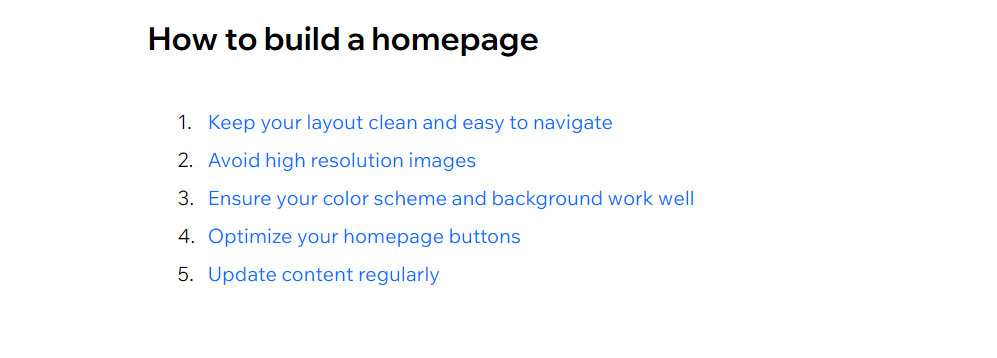
- Its comprehensive blog has a variety of Ecommerce information, including technical and content-related topics including Ecommerce trends and success stories. In addition to this, for brand inspiration, they share advice on improving your website’s design, UX, and SEO to increase sales and conversion.
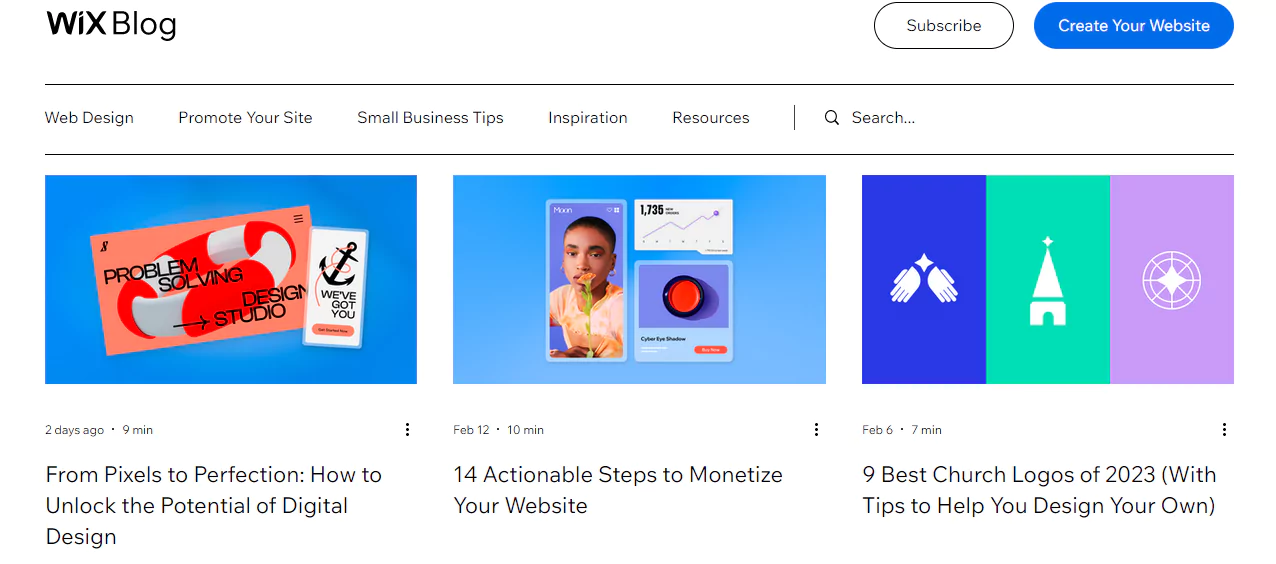
- Wix blog visitors may anticipate finding comprehensive advice on many facets of running a business, focusing on skills, profitability, and acquisition.
- This ecommerce blog design focuses on responding to some of the most often asked issues by readers, like “Top 10 ecommerce blog designs”.
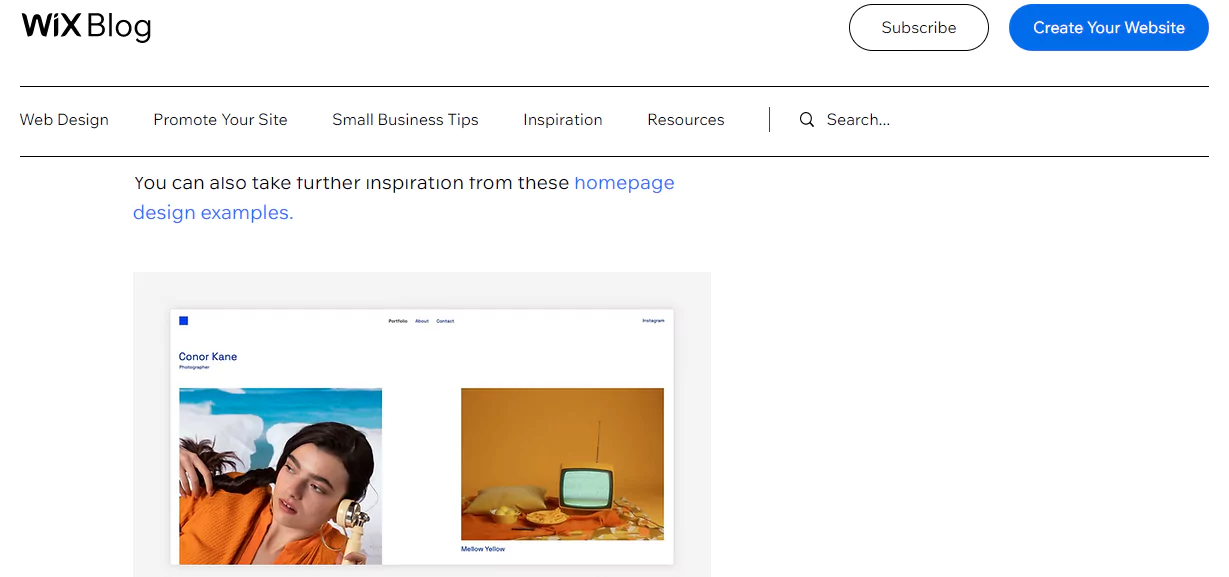
2) Kelty Ecommerce blog
An online retailer, Kelty, specializes in camping equipment for amateurs and professionals. On the website, visitors may discover anything from sleeping bags to backpacks and tents. It is one of the best Shopify blog examples. Here are some blog inspirations from Kelty:
- The cover image of the blogs are very interactive with subtle font colors and branding is done in a minimalistic way.

- The blogs are jam-packed with information but in a very refined way.

- The blog postings include various camping-related subjects and feature places, activities, and necessary gear.
- The Kelty blog is a wealth of knowledge and entertaining content for anybody interested in camping and adventure, with relevant references to the company’s renowned camping gear.
3) Glossier
The skincare and makeup brand Glossier has a blog “Into the Gloss” that features articles in categories of makeup, hair, skincare, and expert interviews. A primary reason why the top Ecommerce blog is able to engage with customers on a deeper level is that its content goes beyond simply talking about the Glossier products.
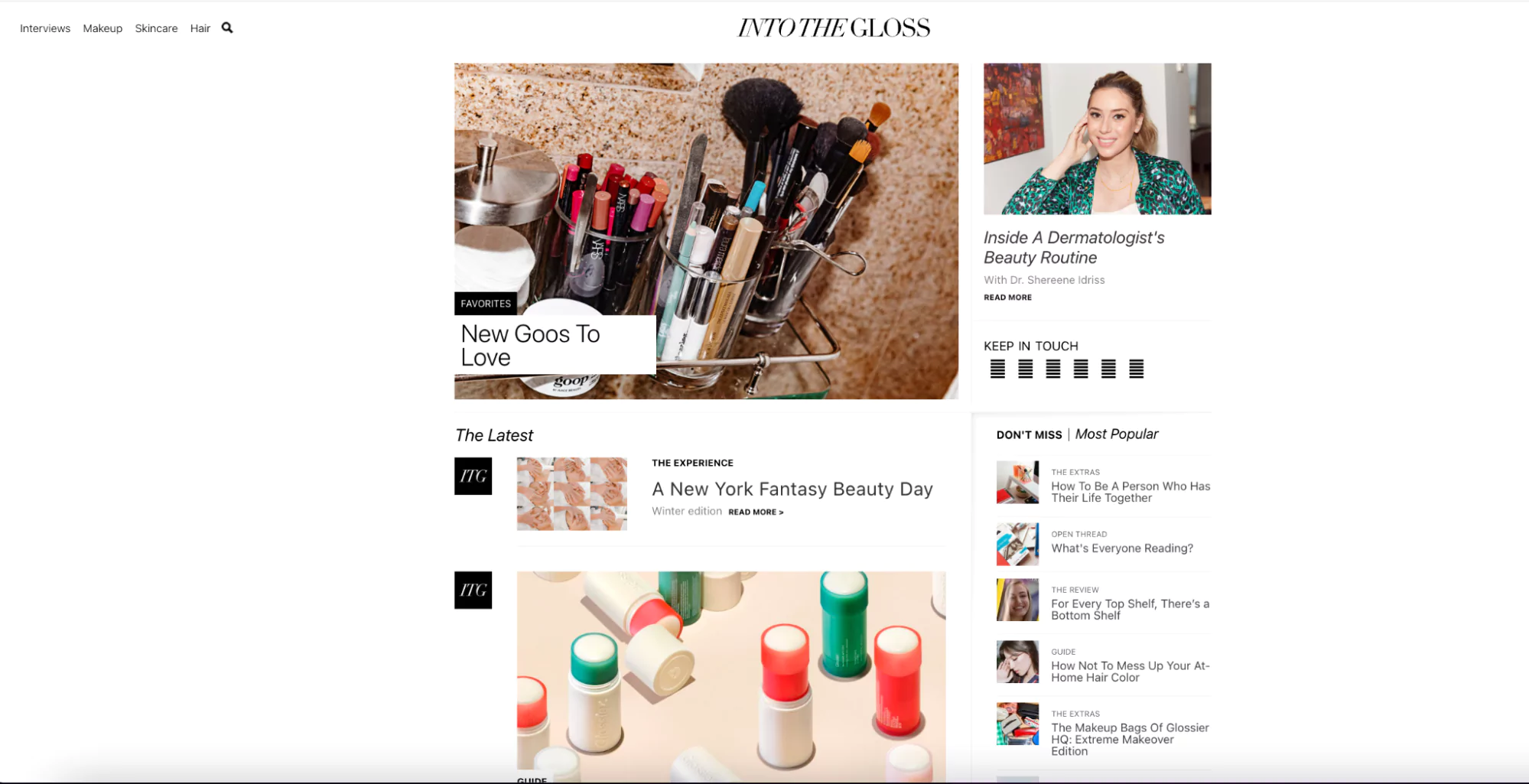
The main takeaways from Ecommerce blog example Glossier are:
- The UX and UI of the blog are neat, easy-to-navigate, and with ample white spaces so that it doesn’t overwhelm the reader.
- Glossier”s Ecommerce content marketing strategy covers topics relevant to the target audience such as makeup, skincare, hair, and expert interviews with dermatologists.
- The posts are a mix of industry insights, expert tips, and product placements.
4) Casper
Ecommerce brand Casper which sells beds and mattresses is considered an authority in matters of sleep: owing to its engaging and informative blog.

What makes Casper Blog the best Ecommerce blog example?
- The blog covers topics for users at different stages of the customer journey: for example, from general topics like “how to find your chronotype to improve your sleep and productivity” to middle-of-the-funnel topics like “how to choose a mattress”, and Valentine’s day gift guide for sleep lovers.
- For blog design inspiration, you can see how there is plenty of white space and visuals, and the information is packed in an easy-to-understand format.
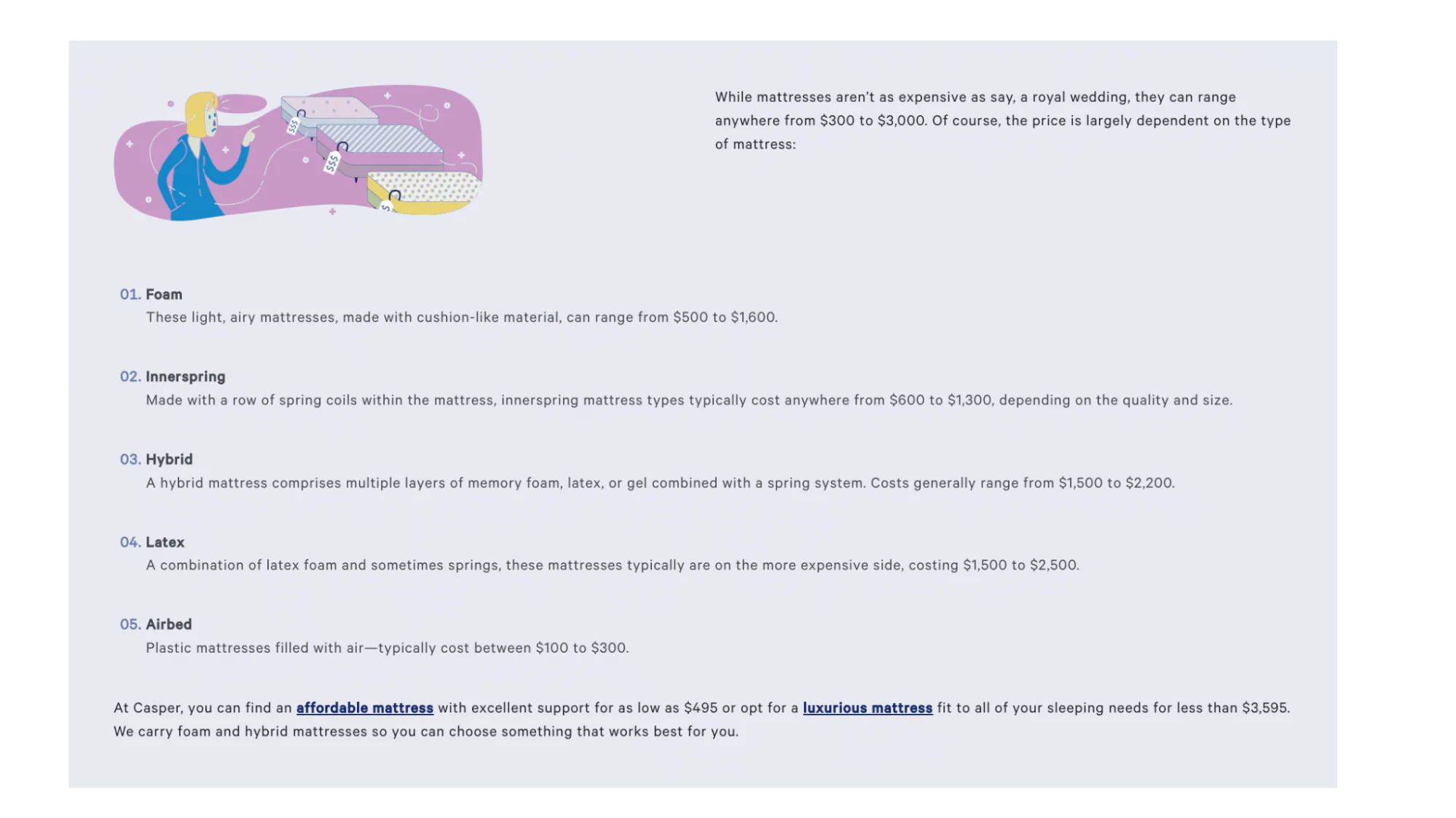
- Lastly, within the blogs, they recommend Casper products that users could check out. While awareness content is important, you cannot leave out product mentions in your Ecommerce blogs and Shopify Ecommerce blogs.
5) Hers for Women’s Health
Healthcare and selfcare brand for women, Hers, is a great Ecommerce blog example. Its blog, called “Savoir Vivre” covers topics such as lifestyle, everyday health, mental health, skin, and so on.
What makes Ecommerce blog Savoir Vivre stand apart are some points:
- A well-planned social media strategy that covers blogs in the form of “link in the bio.”
- A CTA in-between blogs for a free assessment and to explore Her’s services.
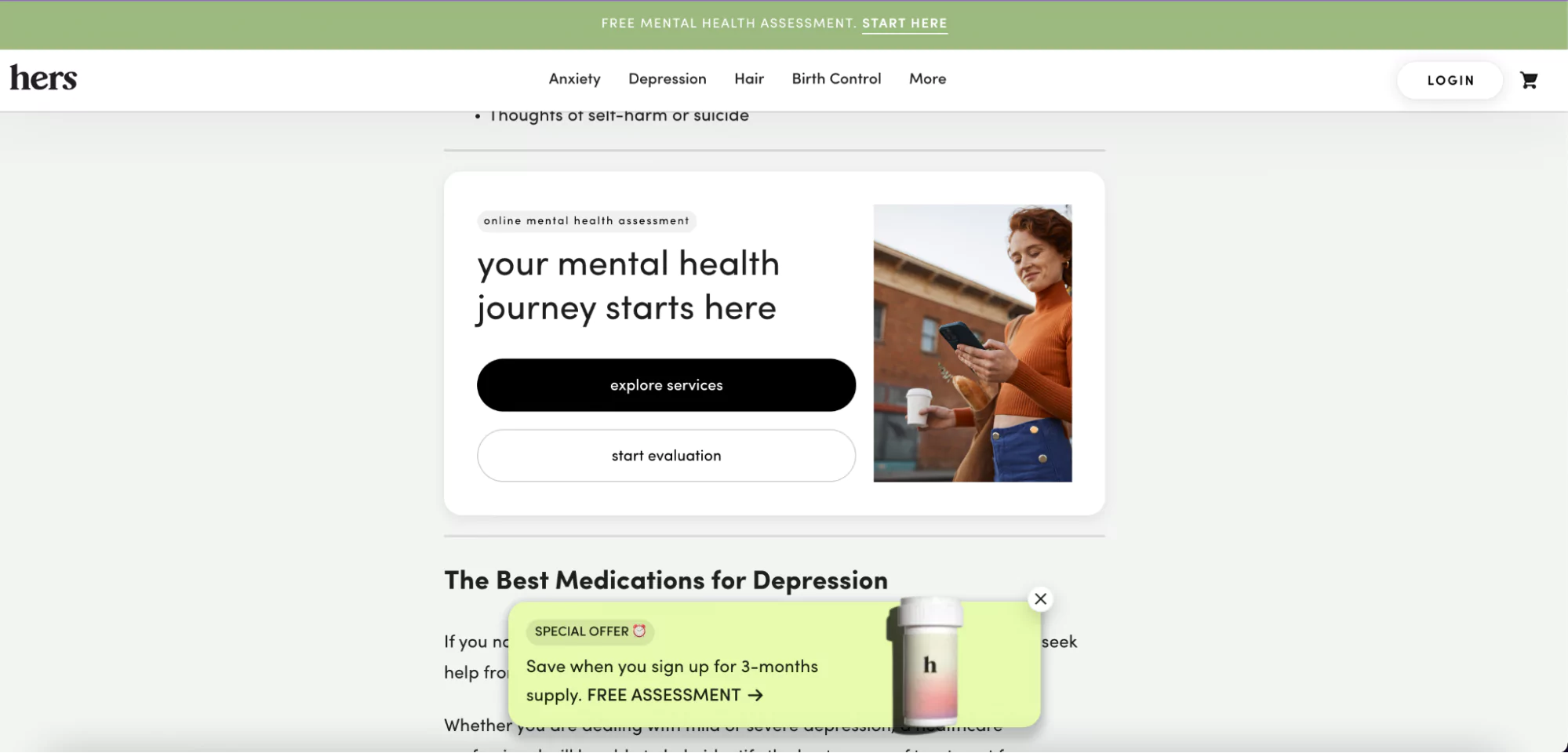
- The look of the blog is consistent with the website’s other pages in terms of color and fonts.
- Product placements at the bottom of the blog reduce the friction for the reader: of having to browse through the website to find the right product. For example, the article about face acne has the following CTA at the bottom.

Final takeaway
Hopefully, these blog inspirations have helped you understand how to start and manage a profitable ecommerce blog that will draw visitors, convert them into customers, and lead to phenomenal sales.
Begin your ecommerce blog now to see new material’s significant effects on your online store. A well-researched and implemented content marketing strategy will help you create the best ecommerce blog to out win competitors and keep getting recurring customers.
You may also like
Essential resources for your success
























































